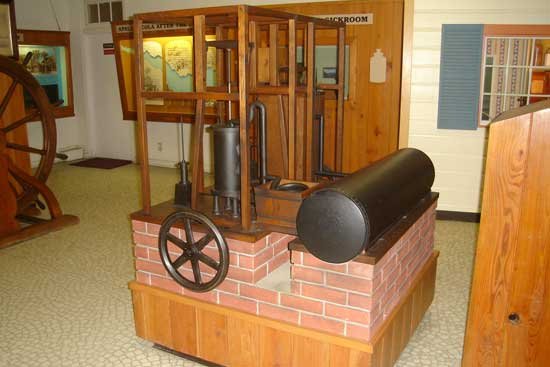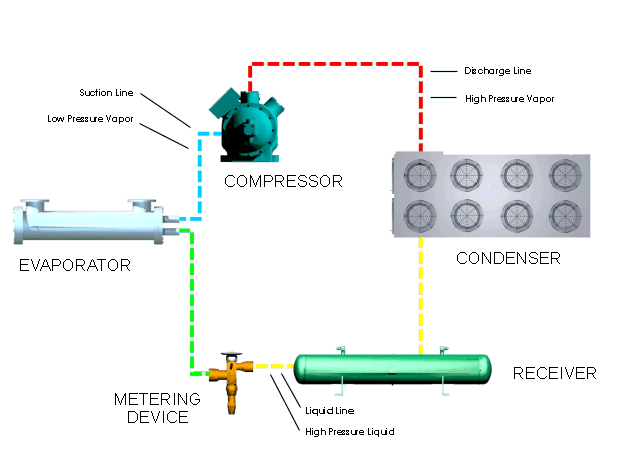ThE RefrigeratoR
The refrigerator is an essential appliance for storing and preparing food in the kitchen. There are different types of refrigerators, many are the functions of refrigerators and different are the internal accessories they can be equipped with. The choice of the right model of this appliance is therefore fundamental and depends on various factors that must be considered at the time of purchase.
Very often they save our life: when we come back from work thirsty or after an intense physical activity, when we are terribly hungry and desperately in need to try something to appease the hunger or simply trying to immerse ourselves in during those torrid summer days!
And then we can say: the refrigerator is the most beautiful and useful invention of the last century!
A Short History
The nineteenth century was a period of very important scientific and technological discoveries that profoundly and radically changed many things . Among the most important inventions was the refrigerating machine to stand out in a particular way. Historically this invention effectively opened the period known as "The Conquest of the Cold" and its importance was seen mainly in the food and medical fields.
We owe the invention of the refrigeration machine to the American inventor and engineer John Gorrie in 1851. It was born primarily as a solution to the problem of transporting goods that were particularly sensitive to deterioration such as meat and cheese.
Credits
Until the invention of the refrigerator, food storage has always been a small nightmare for mankind. Greeks and Romans already used some primordial glaciers, consisting of deep holes in which food was stored with large amounts of ice.
The actual refrigeration technique developed only in the nineteenth century, stimulated by the need to transport large quantities of meat from the prairies of Australia, New Zealand, South America and the American West in the main western European and American markets.
Credits
James Harrison, a painter who emigrated to Australia from Scotland, was among the first to discover and use the principle of refrigeration. It is said that, intent to clean the printing characters with ether, he noticed the refrigerating capacity of the gas on the metal. The painter used this discovery in 1851, pumping the ether into a system of pipes to cool a brewery in Bendigo, in the State of Victoria.
Harrison's idea led to the first successful trip of a ship equipped with a refrigeration system. The ship was the steamship Strathleven , which started in 1880 from Australia heading for London with a load of meat. Despite the duration of the two-month journey, the transported goods arrived in the capital of the Kingdom perfectly preserved.
The first domestic refrigerator was made by the German engineer Carl von Linde, who in 1879 modified an industrial model, designed a few years earlier, making it to scale. This ancestor of modern refrigerators used ammonia as a refrigerant, circulated in tubes through an ingenious steam pump.
Pioneers of electric refrigerators were the Swedish engineers Balzer von Platen and Carl Munters, who with their Electrolux model, created the first electric-powered refrigerator in 1923, beating the competition.
With the advent of refrigerators this was possible and contributed to the development of both the world economy, both for the development of a phenomenon that then took the name of Delocalization but that we are accustomed to call Globalization: the populations were to taste foods from all the world!
In the medical field , however, the refrigeration machines were used for apparently much more macabre purposes: the corpses of the deceased patients, kept at low temperature, could be used much more calmly for the research and study of human anatomy.
The Types
Nowadays there are more than 100 types of refrigerating machines. Only at the industrial level there are more than 50. We know only a small part of them, such as those found in food supermarkets or in large butcher shops or fishmongers. But let's focus on the best known model: the home fridge.
The refrigerator has had two major evolutions: the old generation refrigerator (70s-80s) called CFC-Based. That always had the freezer compartment at the top, and the new generation (90s-2000s) called HFC-Based , whose model, apart from older people, we will all have at home.
Their diversity consists not only in the different structure, but above all in the functioning that, though it may seem similar, is not at all.
The Old Generation Refrigerator
The old refrigerator is called CFC-Based , as it works by means of a refrigerant gas that takes the name of CFC ( Chlorofluoro-Carbon ). Surely your grandparents owned one. Models of this type are all practically out of the market because some research has considered CFC gas profoundly harmful to health if inhaled. Secondly, they were very noisy!
The CFC refrigerator consists of 5 basic elements:
Fridge compartment : this is the cold compartment made up of the refrigerating unit where you store the food
External compartment : it is a compartment between the fridge and the external covering.
Evaporator : it has the task of transforming the gas from the liquid state into the gaseous state. Hence the term "evaporator".
Condenser or Pump : this is the medium through which the CFC gas passes and which connects the evaporator with the compressor. The condenser is a cylindrical tube wound on itself to form coil coils, and this trend is not causal: in fact it is made to make the "gas travel" towards the longest evaporator! In the old fridges the coils were vertical while in the new fridges they are horizontal.
Compressor : it is the "heart" of the refrigerator or the device that has the task of pushing the gas into the condenser through its compression. Think of the compressor as a big pot that has a surface inside that lowers crushing the gas and, as soon as it reaches the base, it rises again, and does this continuously without ever stopping. To make the surface move, it is powered by electric current.
The Principle is Simple
The CFC gas is contained in the compressor in liquid form, at a very low temperature (cold). The compressor compresses the gas by pushing it into the condenser (serpentine pump). Because of the compression (increases the pressure in constant volume, increases the temperature) the gas absorbs heat and becomes less cold.
The condenser has the task of dispersing the heat absorbed by the gas in the compression into the surrounding environment. If you try to touch it, you will find that it is very hot. Once the condenser coil has been run, the gas reaches the evaporator which turns it into a gaseous state.
At this point we understand why the CFC was used and not other gases: the CFC, when it passes from a gaseous state to a liquid, undergoes a considerable drop in temperature, ie it becomes much colder . At the evaporator there is precisely the refrigerator compartment: being much colder than the compartment the CFC absorbs all the heat that is present in the compartment, which cools considerably, to the detriment of the gas that instead heats (becoming liquid again).
In fact, by absorbing the heat of the compartment, the gas is heated and the reason why the coil coils are few: if they were more the gas, which would circulate for much longer, would heat up to such an extent as to no longer be able to absorb heat and then cool .
Therefore, the CFC must quickly pass through these coils, absorb the heat from the compartment and return immediately to the compressor. The gas returns to the compressor and starts the cycle again.
The New Generation Refrigerator
As said before the CFC was banned because it was harmful to health after it was inhaled. Changing the refrigerant gas meant redesigning a whole new refrigeration system as the CFC-based system exploited the characteristics of this gas.
Then the refrigerator was born based on HFC-134a called HFC-Based precisely, which had completely different characteristics from the CFC. What we have at home certainly belongs to this category.
This model consists of the same elements as the previous one but also has the so-called expansion valve, a very small flow regulator that is located between the compressor and the condenser in which the liquid HFC enters with a certain speed and comes out with another. It job is to adjust the flow of liquid HFC, a bit like a sink faucet
The operation is therefore the following:
The HFC gas when it arrives in the compressor is in the gaseous state. Once compressed it overheats and passes to the condenser. In the condenser the gas passes from the gaseous state to the liquid state.
Once the HFC leaves the condenser it passes through the expansion valve which regulates the flow of the coolant in order to decrease the jet pressure and consequently also its temperature. The liquid cools and is passed through the evaporator.
The evaporator stores the coolant and turns it into a gaseous state. Re-entering the coil absorbs heat from the refrigerator compartment, cooling it. The HFC then switches back to the compressor, only when it is no longer able to cool the compartment (so it does not pass as fast as the CFC!).
This is because HFC has a special property: it has a great resistance to heat up, which means it takes longer to warm up and can stay in the evaporator coil for much longer than CFC .
The Thermostat
Modern refrigerators also have another element: the thermostat or even the thermocouple. This small device, usually digital, has the task of measuring the temperature and operating the compressor only when it senses an increase in the temperature in the refrigerator compartment, compared to the set temperature.
So the compressor in our refrigerators compresses the gas only when the thermostat warns that the temperature of the compartment is increasing.
Now you know why when you are silent in your kitchen, you hear from time to time the noise coming from your refrigerator: it is the compressor that is compressing the gas!
The thermostat therefore also reduces electricity consumption by 60%.
The Freezer
The freezer is a system equivalent to that of the refrigerator with the difference that the temperature inside it must be lower than that of the fridge. It does not need any other systems but works exactly with the one installed behind the refrigerator. The difference? Only a matter of size!
In fact, since the freezer, in terms of volume, much less large than the refrigerator it consigues that the gas must cool less space: if in ten minutes your fridge is cooled to +5 ° C, the freezer, being smaller, reaches a temperature lower than about three times. (-18 ° C).
In other words, if we could physically "enlarge" our freezer, it would certainly not be so cold!
Generalities and Characteristic Aspects
To actually understand the refrigerator operation it is necessary to know a "pair" of things:
- The refrigerator is a cyclic thermal system , that is thermal in the sense that it is able to act on the temperature keeping it constant or changing it according to the cases and cyclically because it performs the same operations in a cyclical way. Even the oven is a thermal system, but unlike the refrigerator it is not cyclical.
- With regard to temperature, we must keep in mind that small phenomenon that occurs when two bodies at different temperatures are in contact at the behest of someone or something. We all know that when a body at a higher temperature (warmer) is in contact with one at a lower temperature (colder) the warmer one cools it and the colder one heats up.
This phenomenon goes under the name of the Second Law of Thermodynamics. In truth what happens is this: the coldest cover takes heat away from the warmer body, absorbs it, and the warmer body gives heat to the coldest one, that is, it loses it .
- Each refrigerator operates by means of refrigerant gases , ie gases that have a very low temperature, ie they are very cold and belong to the Freon Gas category. It is very important, however, when talking about gas, not to be deceived by the word "gas". Although it may seem strange, gas generally means an element that can occur in two states: gaseous and liquid. You certainly heard of Liquid Nitrogen, right? Here is a gas in a liquid state. Even water is a gas in a liquid state.
- Another important aspect is that when a gas is taken, there is a close relationship between its temperature, its pressure and its volume . If you try to change one of these three things into a gas while keeping the second "steady", the third magically changes over time with the first and there is no way to avoid it. For example, if you increase the temperature of a gas, (heat it or cool it) and if it is contained in a hermetically sealed container (constant volume), the pressure will increase or decrease over time along with the temperature.
Have you ever thought about why when cooking, cover with a lid the pot to boil water? You heat the bottom of the pan with the fire (increase in temperature) while the volume remains constant (due to the lid), so doing the pressure increases and in a short time the water boils. If you try not to put the lid, the water takes about 10 minutes more to boil. The same goes for Refrigerators.
References for Further reading
Big Thanks to @enginewitty for this cool Banner




@noganoo fucks his cousin! It's disgusting!!!
nice arrangements of datas! well done!
In the modern world there is just so much. Even refrigerators have become smarter than some people. Companies like lg replacement parts customer service adding artificial intelligence to their appliances and refrigerators are no exception. They have so many electronics that you can even control your refrigerator remotely from your phone.